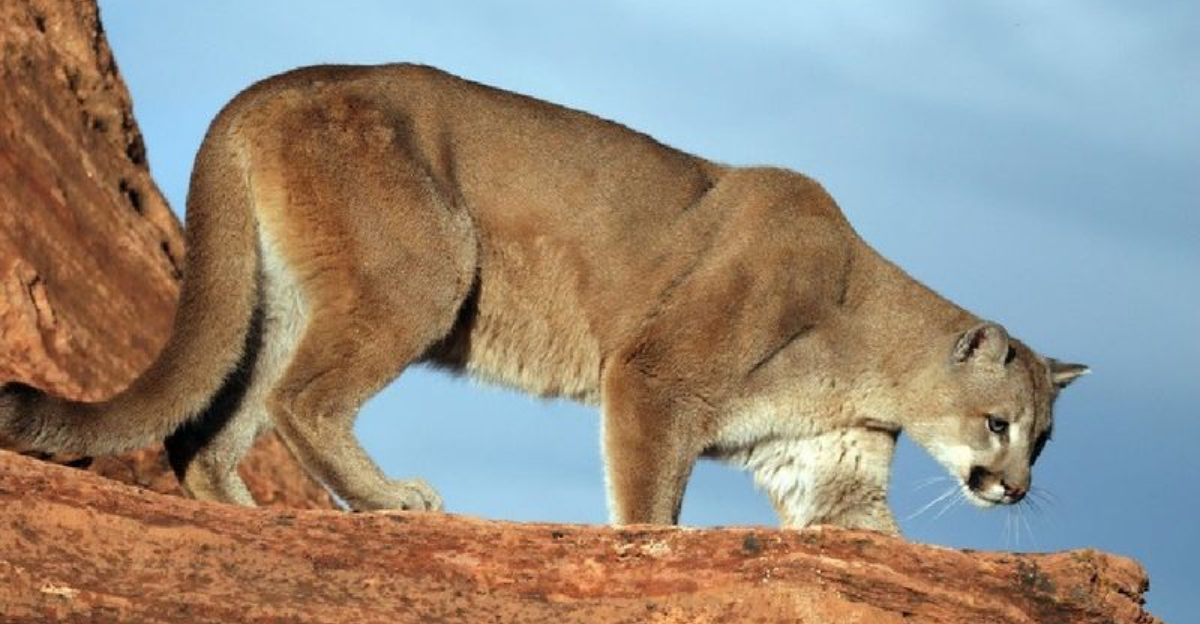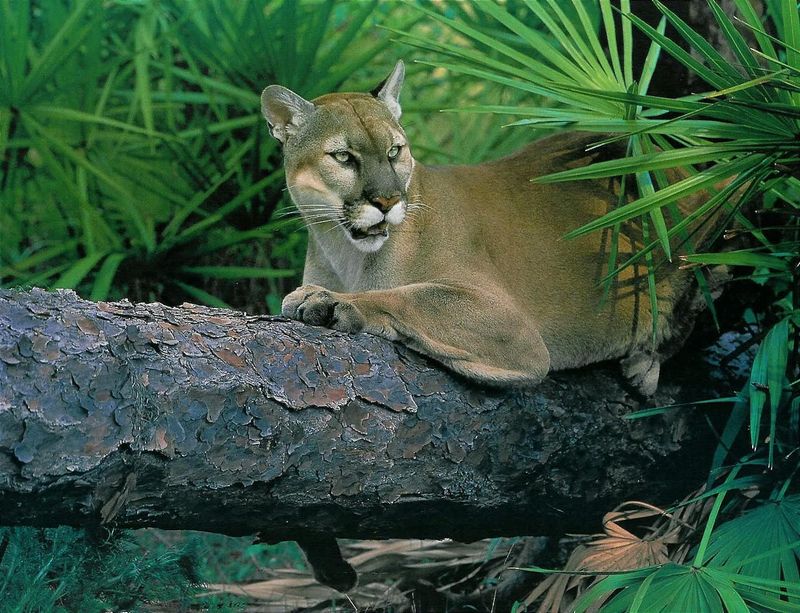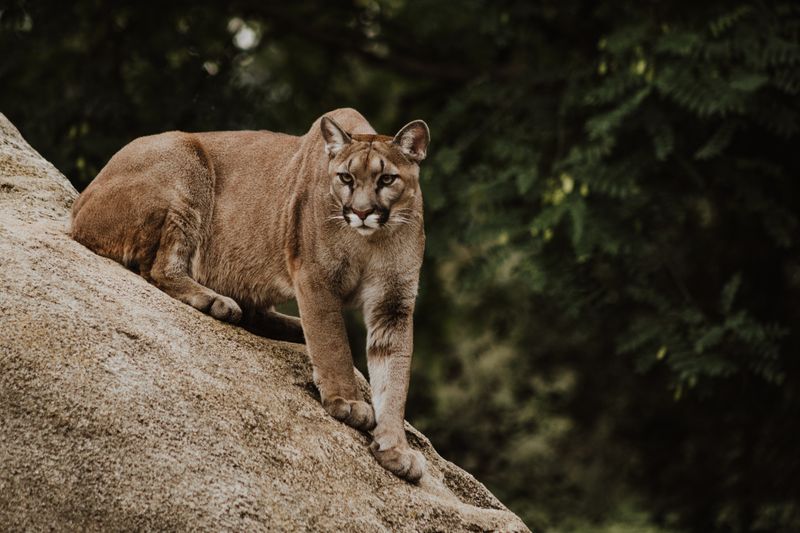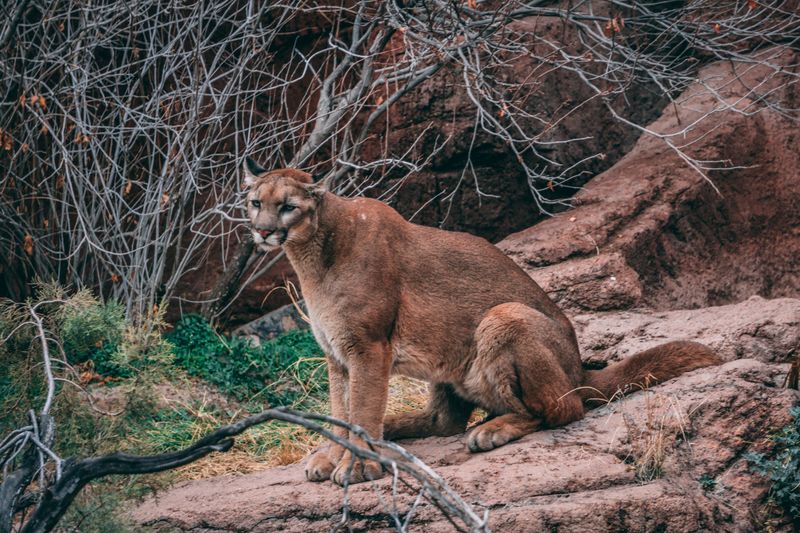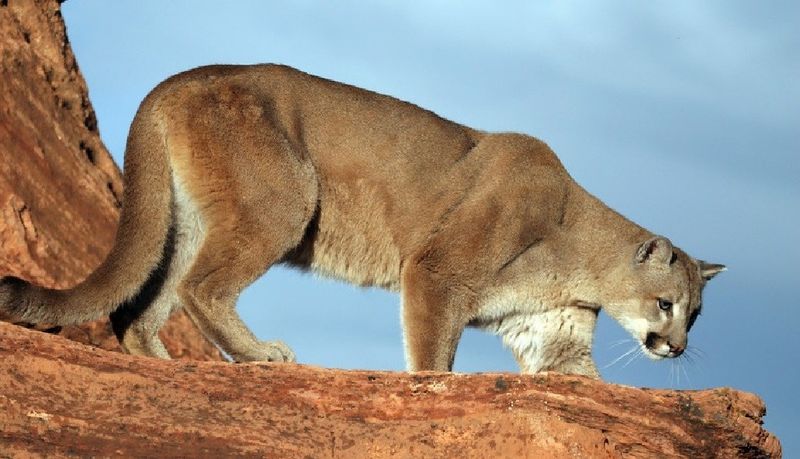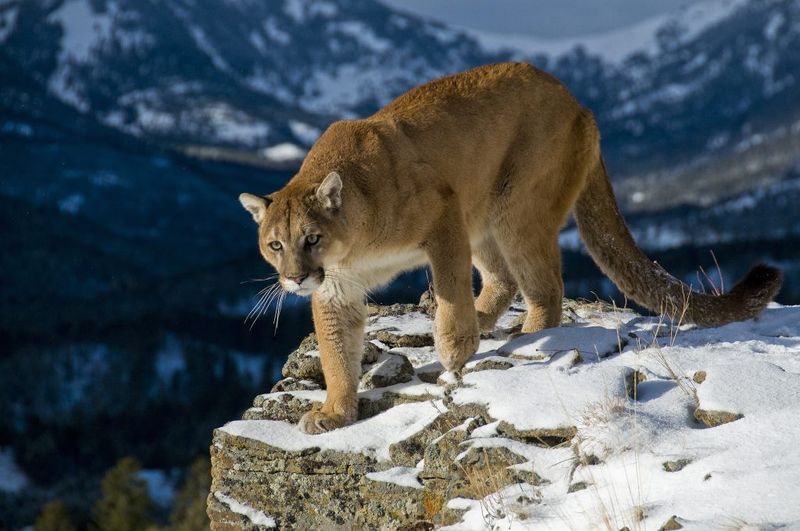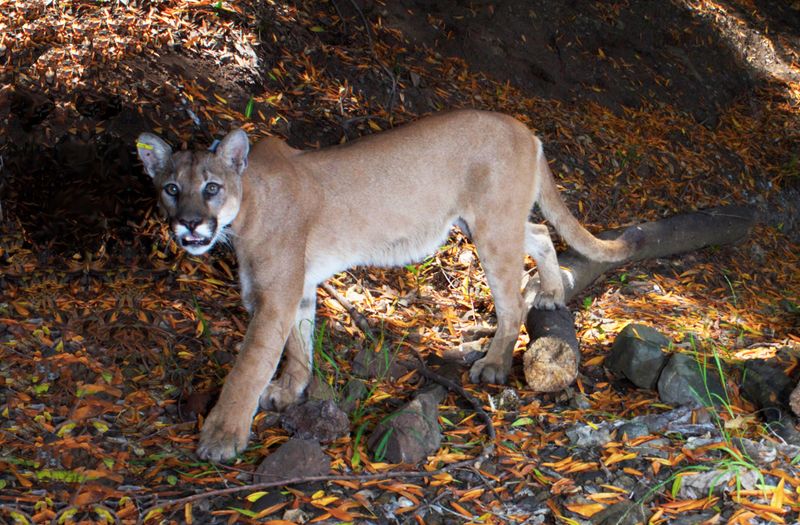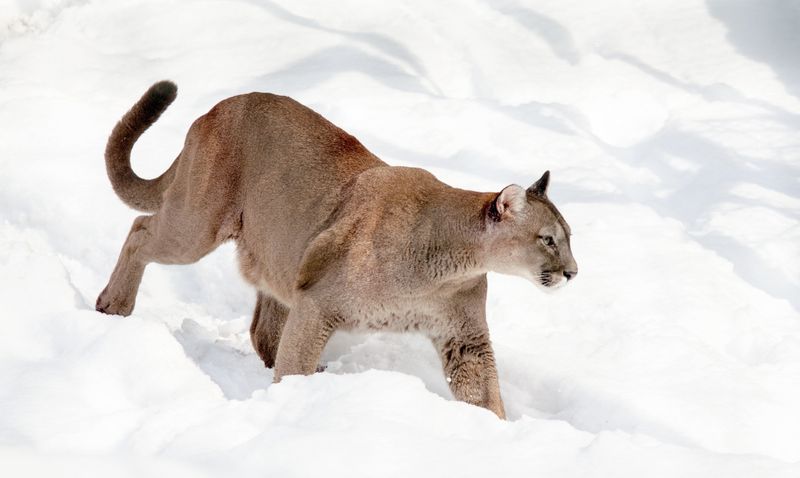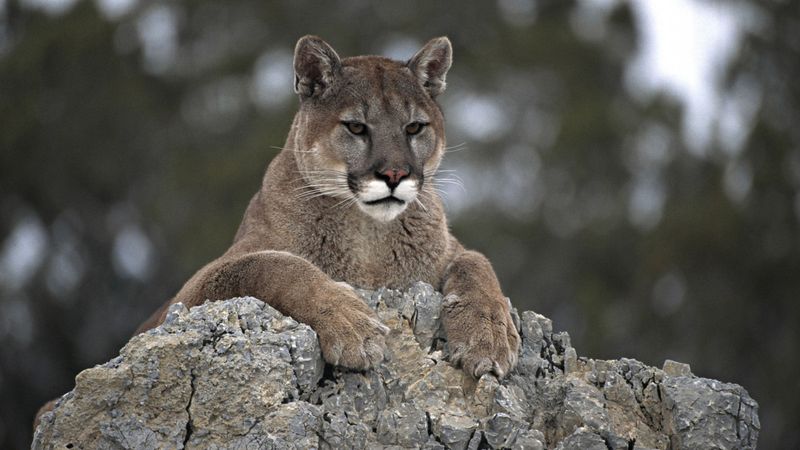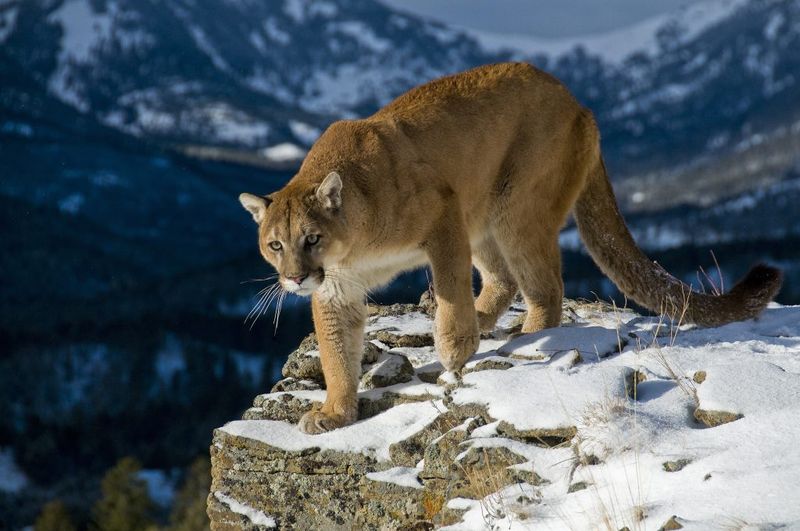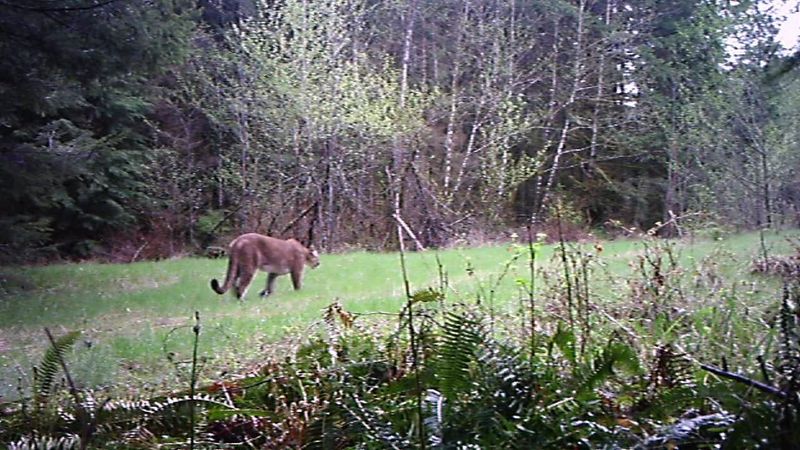📖 Table of Content:
In the heart of the American wilderness, where civilization gives way to tangled underbrush and silent canopies, panthers still roam. These big cats—often referencing the elusive Florida panther or broader cougar populations—remain one of North America’s most elusive apex predators. Though their numbers are dwindling in parts of the country, there are still regions where they flourish in relative secrecy and serenity.
Across the United States, a handful of states provide critical habitats that support not only survival but also the quiet prosperity of these wild cats. It’s not just about space; it’s about the right blend of isolation, prey availability, topography, and ecosystem stability. From sun-drenched swamps to rugged highland forests, these environments offer everything a panther needs to hunt, mate, and raise its young in safety.
This article explores the top 10 U.S. states where panthers and their close relatives—especially cougars and mountain lions—continue to thrive. Each state offers a unique backdrop, shaped by geology, policy, and climate, creating havens that support these reclusive felines. Understanding what makes these states ideal can help guide conservation efforts and deepen appreciation for North America’s wild heritage. Let’s delve into these strongholds of stealth and survival.
1. Florida
Nowhere is the presence of the panther more iconic than in the sun-drenched wilds of southern Florida. The state’s unique distinction as home to the endangered Florida panther places it at the heart of conservation efforts. Deep within the Everglades and Big Cypress National Preserve, these animals navigate a mosaic of wetlands, forests, and prairies. Unlike many regions, Florida offers consistent warm temperatures and a relatively stable prey base year-round. Road mortality and habitat fragmentation are key threats here, but concerted efforts are being made to build wildlife corridors and underpasses. Biologists track and manage this subspecies closely, often fitting them with GPS collars to monitor survival and range. Florida remains the last bastion of the true “eastern” panther in the wild.
2. Texas
Sprawling across deserts and brush country, Texas offers a rugged, untamed landscape perfectly suited for cougars. Unlike its eastern neighbors, Texas boasts vast private ranchlands and relatively few urban centers in certain regions, allowing big cats to move freely. The remote terrain of West and South Texas provides ample cover and hunting grounds, making it ideal for stealthy predators. These cats have adapted well to arid climates, showing remarkable resilience in areas like the Big Bend and Edwards Plateau. Though not as protected as in other states, local respect for wildlife often means minimal interference. Sightings are common near the Rio Grande and in remote canyons, where food and solitude abound. Texas stands as one of the southern strongholds for panther-like big cats.
3. California
Cradled between mountains and coastlines, California nurtures one of the most stable cougar populations in the country. The Golden State’s geography is a paradise of options—coastal ranges, Sierra Nevada foothills, and oak-studded valleys all provide excellent habitat. With strong legal protections in place, California mountain lions have room to roam and breed. Their territories may stretch for miles, often overlapping with hiking trails and suburban edges, leading to the occasional encounter. Despite that, they remain remarkably elusive and are rarely seen during daylight hours. In places like Los Angeles, cougars even cross freeways using specially built corridors such as the Liberty Canyon wildlife crossing. California’s mix of awareness, policy, and diverse terrain keeps its cougar population thriving.
4. Arizona
Bordering both desert and mountain biomes, Arizona delivers an impressive array of suitable habitats for panther relatives. Its rugged canyons and elevated plateaus support cougar populations that are both adaptable and enduring. The state’s arid zones—like the Sonoran Desert—offer surprisingly robust ecosystems that sustain these big cats. These areas host a wealth of deer, javelina, and smaller mammals, offering a varied diet throughout the year. The Mogollon Rim, with its pine forests and remote terrain, acts as a stronghold where human interference is minimal. Arizona’s vast tracts of public land are crucial for roaming predators that need solitude and secrecy. Resilience and topographic diversity make this state a safe haven for panther kin.
5. Colorado
Towering over the continental divide, Colorado’s Rocky Mountains provide a majestic refuge for cougars. With elevations that span alpine tundra to lowland scrub, the state hosts a wide range of ecosystems suited to feline adaptability. Deer and elk are plentiful, ensuring a stable food source for these predators. Because of its vastness, mountain lions here often roam unnoticed, their presence betrayed only by tracks or game camera footage. Hunting regulations and educational campaigns help balance conservation with population control. Cougars here are known to be especially elusive, blending seamlessly into the pine forests and rock outcrops. Colorado’s wilderness ensures the species remains a secretive master of its terrain.
6. New Mexico
Stretching from desert basins to snow-capped peaks, New Mexico’s wild spaces host a healthy population of cougars. The Gila and Lincoln National Forests provide remote, high-elevation cover ideal for birthing and hunting. Prey species such as mule deer and rabbits are abundant, supporting strong reproductive rates. New Mexico’s relatively low human population density means fewer human-cat conflicts. Many of the cougars here dwell in areas once roamed by the now-vanished jaguar, reclaiming a predator’s place in the food web. Local wildlife managers often work closely with ranchers to ensure coexistence. New Mexico offers an optimal blend of old-world wilderness and modern conservation.
7. Oregon
Blanketed in misty evergreens, Oregon’s deep woods cradle one of the largest cougar populations in the Pacific Northwest. The coastal range and Cascade Mountains are ideal corridors for migration, hunting, and denning. Forest management practices have helped maintain the complex undergrowth that cougars use for concealment. Deer herds flourish in these areas, providing ample prey throughout the seasons. Human encroachment is limited in many parts of the state, allowing natural behaviors to persist. Cougar sightings, though rare, indicate a healthy and expanding population. Oregon’s cool, wet climate and biodiversity support an ideal predator-prey balance.
8. Utah
Utah’s dramatic sandstone cliffs and forested mountain ranges conceal an understated but vital cougar population. The Wasatch Range and Zion backcountry offer solitude and elevation that predators find ideal. Despite the state’s focus on recreation, many wilderness zones remain untouched and rich in prey. Cougars navigate these mixed terrains with ease, using rocky ledges and deep canyons for ambushes. Hunting is legal but regulated to prevent population decline. Some of the state’s most elusive cougars are tracked in snowy northern regions. Utah’s combination of high desert and alpine wilderness ensures they have room to roam.
9. Montana
Dominated by wild spaces and a frontier ethos, Montana is a northern sanctuary for cougars. The Bitterroot and Glacier regions are prime habitats, rich in deer and natural cover. Cold winters do little to deter these big cats, which thrive in snow-covered forests. The sheer scale of Montana’s wilderness allows them to claim vast territories with minimal disruption. State wildlife programs monitor populations while educating locals about coexistence. Montana’s cougars exhibit classic stealth behavior, often remaining hidden even near human settlements. With its mountains and river valleys, the state serves as a vital northern outpost for panther kin.
10. Washington
Famed for its rainforests and alpine peaks, Washington offers cougars a moist, verdant paradise. The Olympic and Cascade Ranges provide consistent cover and prey, supporting a robust population. Here, dense canopy and rugged elevation allow cougars to remain almost invisible to the human eye. Conservation groups actively study and advocate for safe wildlife crossings and protected migration paths. Cougars in Washington often share habitat with black bears and wolves, demonstrating their adaptability. Hunting is managed to ensure ecological balance without depleting numbers. Washington’s thick forests and progressive conservation efforts cement its place in the feline hierarchy.
